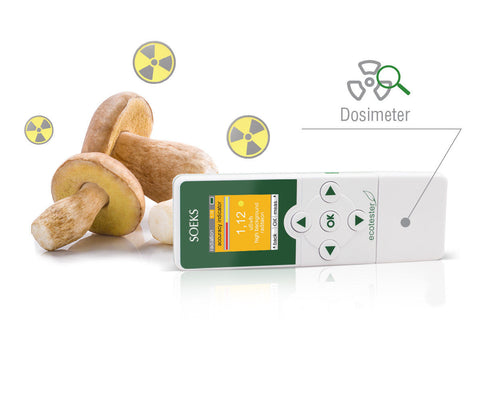What Is CPM in Radiation?
What Are Counts Per Minute in Radioactivity?
When you get a Geiger counter and are learning how to use it, you’ll need to know about CPM, which is the counts per minute that you’ll see displayed on the analog meter in addition to the corresponding level of radiation. You might sometimes see counts per second, or CPS, instead, or you can easily convert from CPM to CPS if you’d like by dividing your CPM value by 60. So what is the CPM reading all about?

View Radiation Detectors that Measure CPM
How Does CPM Work?
The counts per minute measurements are generally used to pick up the number of particles around, which could include alpha or beta particles. A different level of measurement tends to be used for rays, including gamma rays and X-rays.
Instead of showing how much radiation something is giving off, the CPM radiation levels tell how many detection events the meter picks up. So the CPM amount doesn’t show you the amount or strength of the radiation. The device that you’re using to measure radiation can then also tell you the dose rate, although the conversion from CPM to dose rate will vary based on your specific device and some other factors, such as the kind of radiation. A Geiger meter uses energy compensation to create a reading of the dose.
While the measuring rate is “counts per minute,” the device often takes a sample from less time than the full minute and then determines what the total would be for the minute based on that sample.
What Does the CPM Value Mean?
Once you get your CPM reading from your device, you then need to figure out what that reading means. What are normal radiation levels CPM and what are dangerous ones? If you have your Geiger counter calibrated to Cs137, which most are, 1 milliRad per hour would equate to 1,200 CPM on your counter. At the same time, 1 microSievert per hour would equate to 120 CPM on the reading. These are more universal units of measurement that can help you better understand your radiation exposure.
A CPM reading of at least 100 is considered a warning level by the Radiation Network, although the length of time you’re exposed to the radiation is an important factor. If you’re concerned about staying within safe radiation levels, Ken Jorgustin explains on the Modern Survival Blog that it would take 432 days at a CPM of 100 to up your chance of getting cancer to odds of 1 in 1,000. At higher exposure rates, it would take less time. For instance, it would only take four days to increase your rate to those odds if you’re exposed to a level of 10,000 CPM.
When you use a Geiger Mueller detector, you’ll be able to easily see the counts per minute of radiation in a certain area. This can help you understand more about your environment and your exposure.


Feb 07, 2018 • Posted by partho bhattacharjee
can 600 cpm radiation harmful for human body?